How to Onsen (Like a Local!)
, by Ayaka
Dipping in an Onsen, or hot spring, is a post hike ritual for Ayaka! She'll explain all about onsen etiquette, from how to enter the bath to the best way to unwind afterwards so you can dip your toes into this part of our culture!
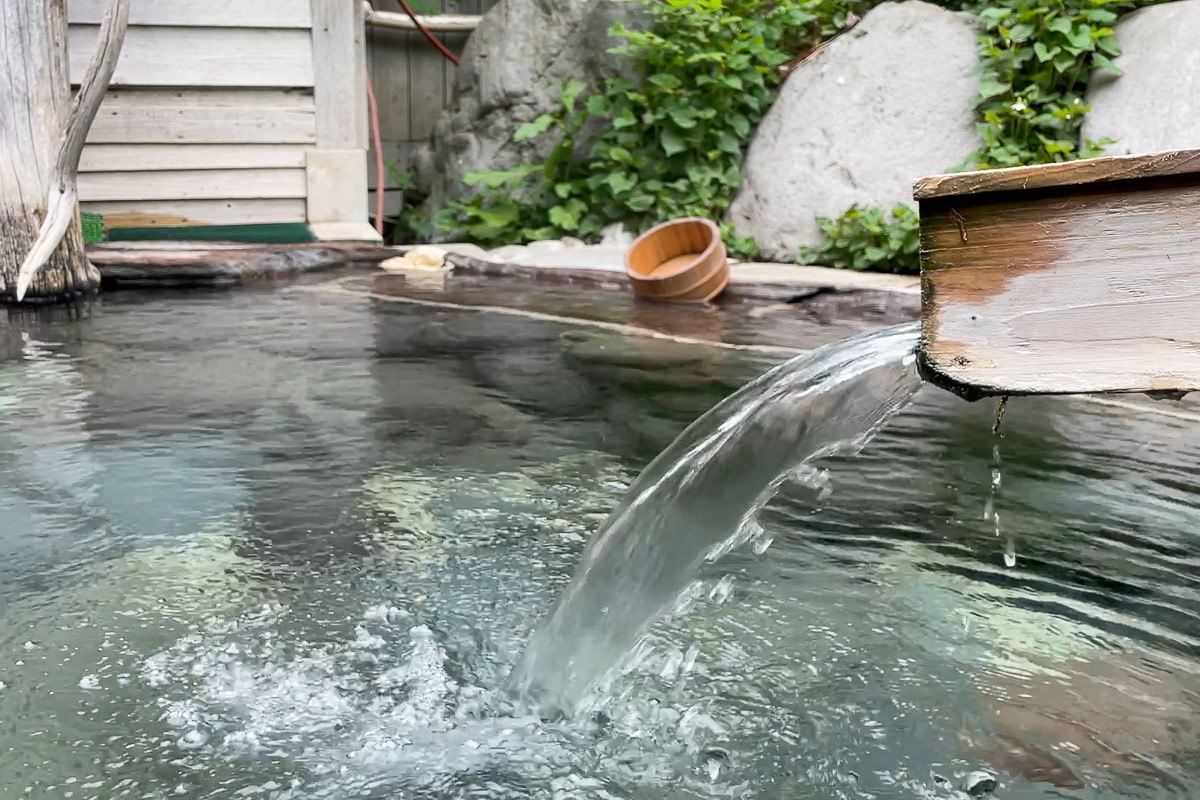
So you’ve booked an amazing adventure holiday in Hokkaido and as part of your journey, you’ll be staying one or more nights at an “onsen” (the Japanese word for “hot spring”). Soaking in the hot-spring waters after a day exploring Hokkaido’s outdoors is a great way to unwind, and there are a number of health benefits.
Amazing! …But how to use an onsen? And do you have to be naked? What about tattoos?
These are questions I am asked by a number of Adventure Hokkaido guests! So if these questions are playing on your mind before your Hokkaido journey, don’t worry, you are not alone. For many, the idea of sitting completely naked in a bath alongside total strangers might seem daunting at first! However, all the adventurers I know are glad they took the plunge and soon soaking in an onsen becomes as important a part of travel as dinner.
My “how to onsen” guide will help ease your worries and have you enjoying this amazing part of Japanese culture with ease. Read on to find out how to enjoy an onsen experience like a true local!

Getting to the baths
While some onsen stand on their own as public bathing facilities, others are commonly attached to Japanese-style accommodations such as ryokan or minshuku. It is possible to visit onsen as a day visitor and you can check yourself into the baths via the accommodation’s front desk. There is usually a ticket machine near the front door where you pay for your entry and, optionally, rent towels. Once you have got your tickets take them to the front desk and you will be directed to the baths.
Some onsen facilities also have private baths you can rent for a set time. These are often beautiful facilities and are an option if you are not yet feeling confident enough to join the locals in the public baths. When booking these you will be asked what time and how long you plan to use the onsen for.
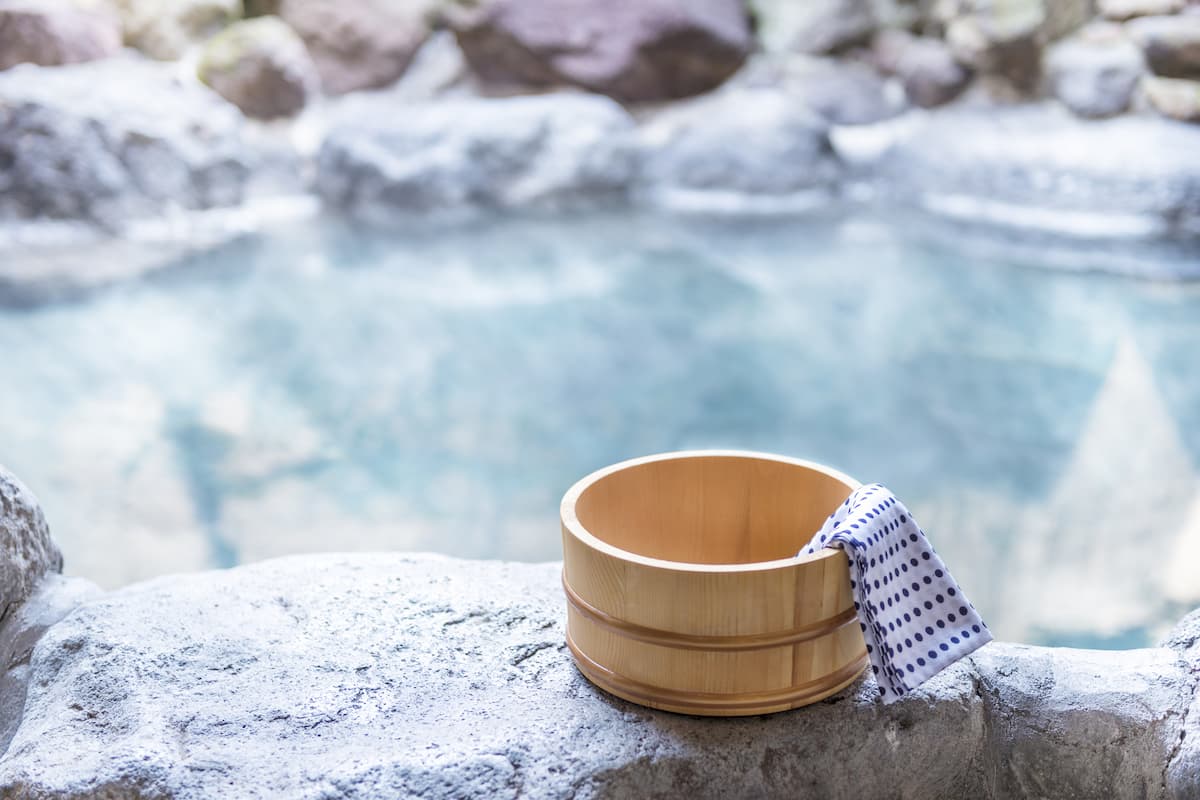
If you are staying at a ryokan or minshuku, you are free to make your way to the bathing area whenever you are ready. You will find a “yukata” set in your bedroom. These lightweight robes feel really comfy after your soak and also make getting changed much easier, I definitely recommend embracing this part of our onsen culture.
Once you’re in your yukata, pop your slippers on, grab your large bath towel and smaller modesty towel from your room as well as anything else you need and it’s time to onsen!
Two Curtains… Which is for me?
At the entrance to the baths, you may be greeted by two “noren”, Japanese split curtains. At the majority of onsen these days, bathing is not mixed and baths are separated by gender. These two noren denote which baths are for men and which are for women. A lot of the time, colour coding makes it pretty obvious– blue curtains for men and red for women.
However, sometimes, onsen don’t use colour-coded curtains which can leave you wondering which bath is for you. But don’t worry, I have a quick Japanese lesson to make sure you don’t walk into the wrong changing room (which, it goes without saying, is quite a cultural faux-pas)!
The two key kanji characters you need to know are:

女
Women
Think of it like a lady sat at a handloom.

男
Men
It looks a bit like a man working hard in a field.
Once you are inside the onsen, take your slippers off before stepping up onto the raised changing room floor and store them neatly in whatever space is provided. Do not wear slippers in the changing room or leave them anywhere on the raised area. You may notice numbered pegs or some kind of marker where you take off your slippers. This is so you can identify which slippers are yours when you come back, really handy when all the slippers look the same!
One more thing to be aware of when staying overnight at an onsen hotel; many hotels swap the male and female pools at a set time. This means you can try both sides, which are often different. But it can catch you out when going back for a second dip. They will tell you what time the curtains change during check in and make sure you don’t wander into the wrong side half asleep in the morning!
Birthday Suits or Bathing Suits?
It’s time to address the topic that we’re sure many of you came here for… do you have to bathe nude, or can you wear a swimsuit in an onsen? As a rule of thumb, no, you cannot wear a swimsuit in an onsen. However, there is no need to feel shy or uncomfortable– remember that everybody else in the onsen is in their birthday suit, too! Communal nude bathing is such an ingrained part of Japanese culture that you will find that nobody looks at you twice and you’ll soon feel completely at ease.
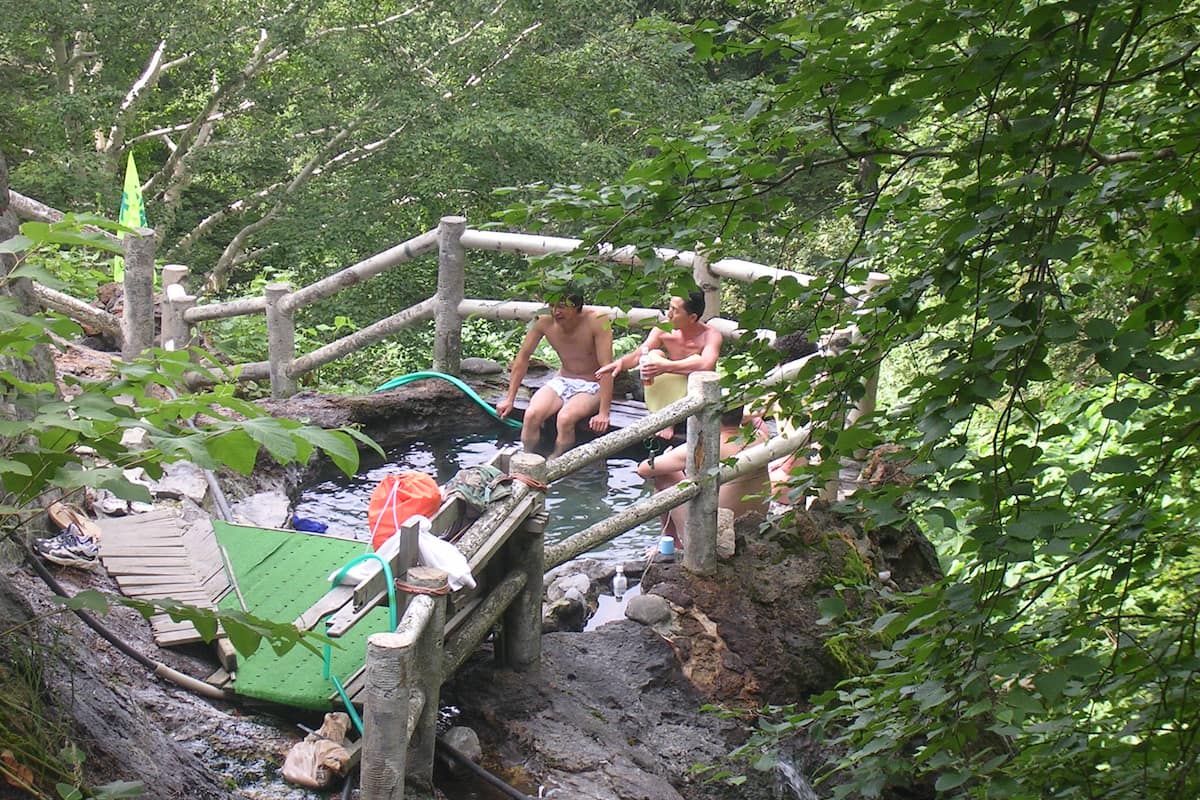
So, before you go into the bathing area, you will need to get undressed in the changing rooms. Sometimes ryokan have large lockers in the changing rooms, but other times there may be simple wicker baskets on shelves and smaller lockers for your valuables (though it’s of course safest to lock your valuables in your room, if you are staying the night). You will need to leave your clothes, big bath towel and other possessions in the changing room for when you are done bathing. However, you can take the little towel into the bathroom with you (and you can use it to cover your modesty if you are still feeling a little shy).
Before you head out into the baths, make sure you have taken care of anything else that you need to do, such as removing makeup. Then, it’s time to onsen!
The Onsen Code
You may have heard some of the many “rules” around bathing in an onsen and it can be easy to feel overwhelmed worrying that you will accidentally break a rule and upset the locals. In truth, all of the etiquette rules have a common purpose, to keep the baths clean and relaxing for everyone. You won’t upset anyone as long as you keep this shared purpose in mind.
The first key piece of etiquette is showering off before getting into the bath, using the shower booths provided. This is a simple practice to keep the onsen waters clean and bacteria-free for everyone to use! The washing areas have faucets, showers and mirrors, where you sit down on a low stool in front of the mirror to wash your body and head. In Japan, we don’t stand under the running shower, we instead hold the shower head in our hand and rinse our body. This both cuts down the water you need and avoids splashing your neighbor, which wouldn’t go down well. We use the bowl (or bucket in fancy places) provided to wash the soap off our modesty towels.
Once you’ve washed off, those with long hair will need to tie it back. Although it’s not necessary to wash your hair if you don’t want to, hair trailing in the water, or submerging your head, is thought of as inconsiderate. Again, it is about keeping the shared water clean. Your modesty towel is also not to be submerged, so if you have been using it to cover up, place it neatly on the side of the bath, away from the waterline (but still within your reach) after you get in. But, my favourite towel-storing method is to fold it up and put it on my head! You might notice a lot of fellow bathers doing this, too!
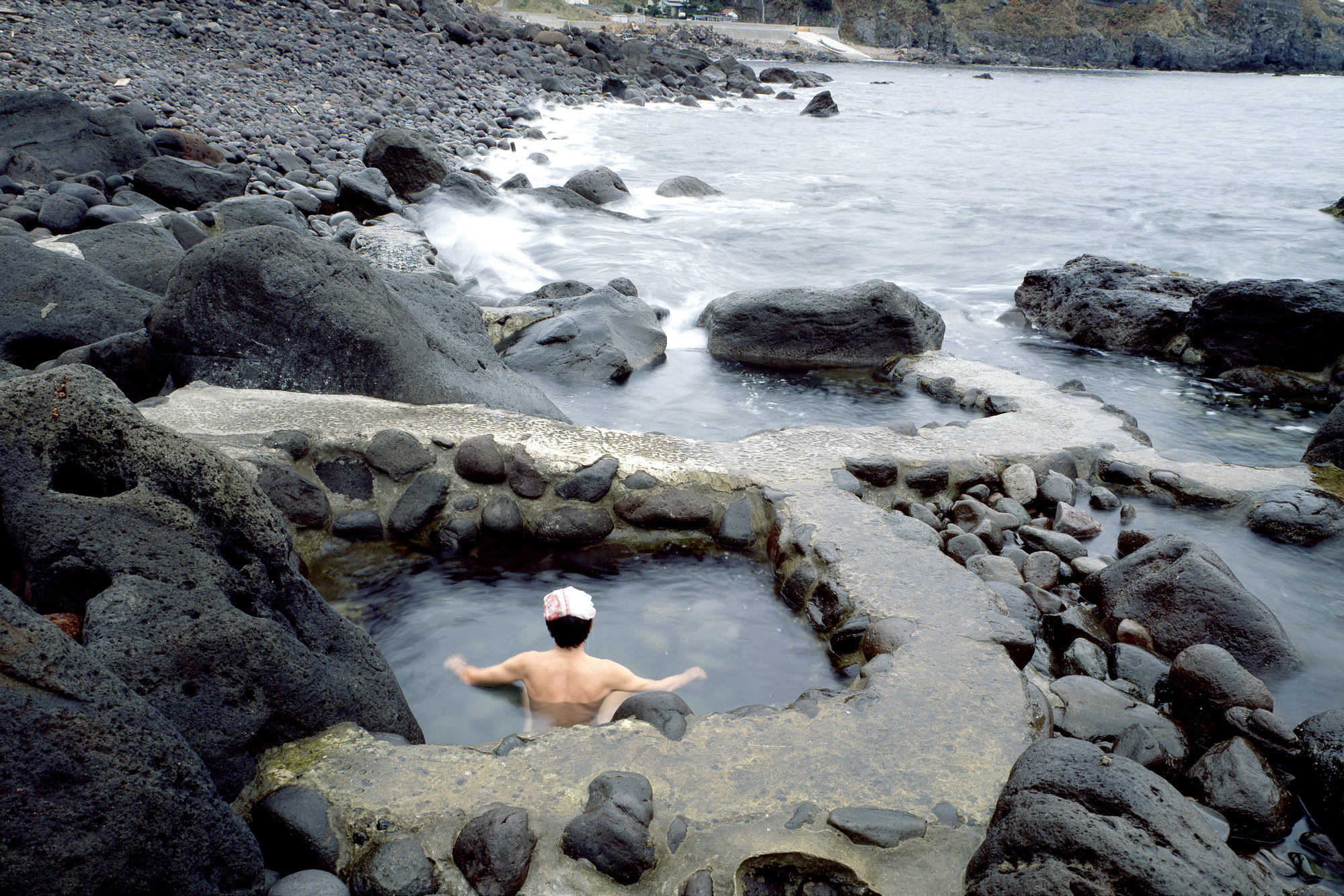
Finally, we are all responsible for maintaining the relaxing atmosphere that makes an onsen visit so good for the soul. Letting your mind wander as you soak in both the hot water and the peaceful environment is the reason many visit the onsen. So it goes without saying that someone running around, shouting or swimming laps around the pool would ruin this atmosphere. Also, while an onsen dip can be a social event with friends, remember to be respectful of those that are there for some quiet time.
Which Baths to Try? How About All of Them?!
Once you have showered off, you’ll notice the number of baths available for you to try! There isn’t really an order in which to use the baths (though it goes without saying that jumping into any cold or lukewarm baths first will earn you some funny looks). Before you try any of them, do like the locals do and use one of the bowls or buckets provided to splash some water over your body and see how it feels. If it’s too hot, try a bath with a lower temperature.
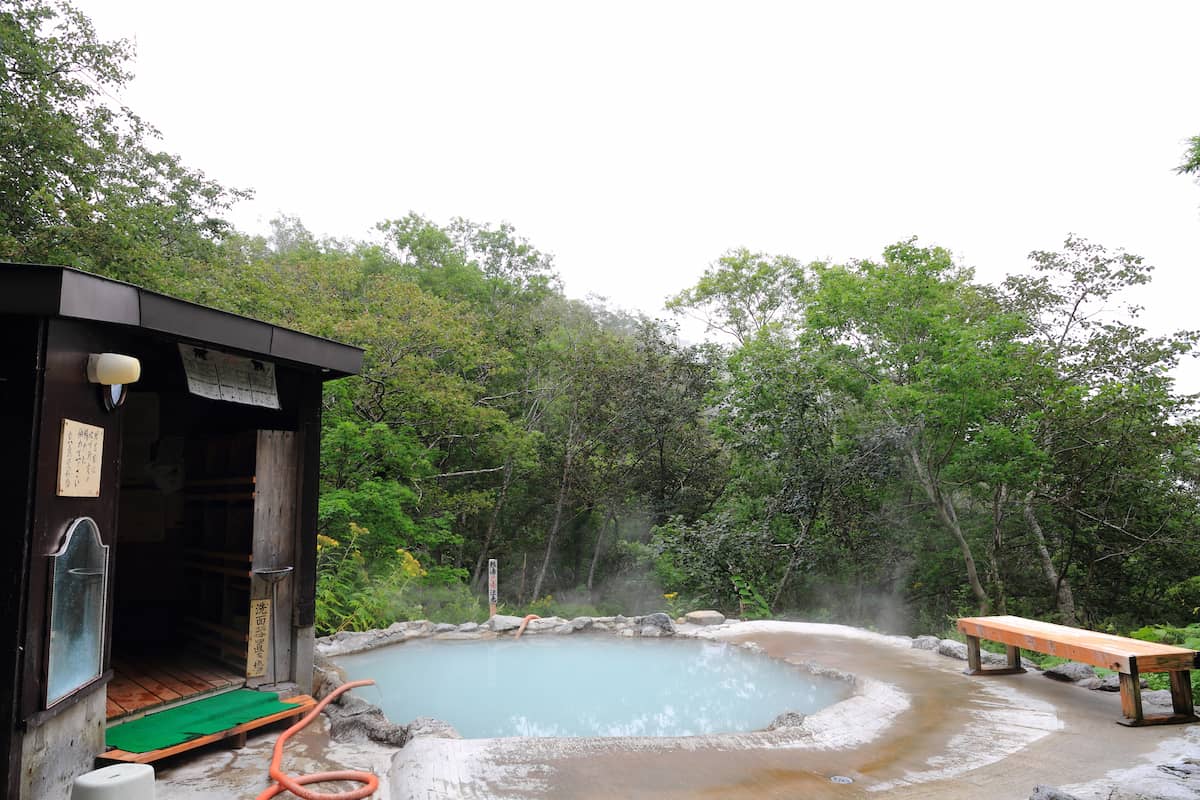
Alternatively, head outside! Most onsen will have open-air stone baths known as “rotenburo” and they are a favourite among many Adventure Hokkaido guides and guests! And for good reason– the sensation of bathing surrounded by the elements is wonderful.
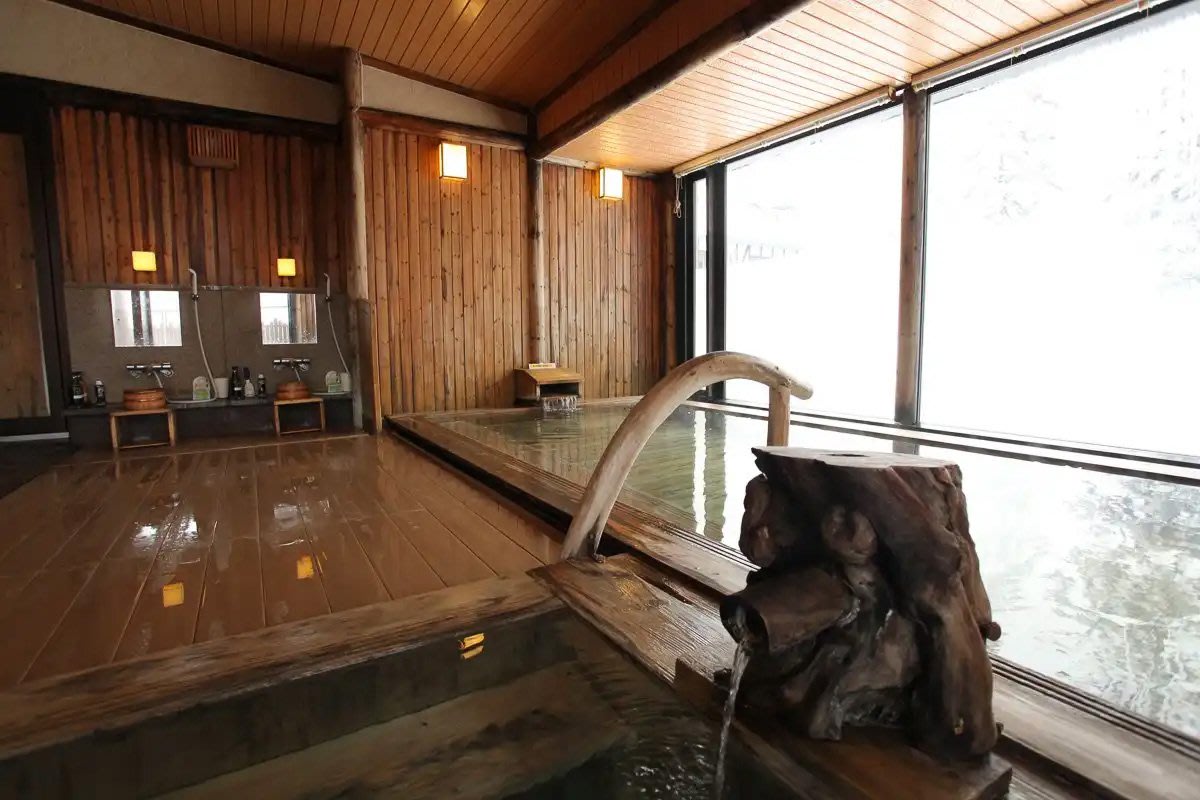
A bath that you may find outside or inside, and my personal favourite, is a “hinokiburo”. These are wooden baths made of fragrant Japanese cypress wood. The wood’s perfume infuses with the hot spring water, and it makes your skin smell so pleasant when you get out!
Super Sauna
Sometimes, an onsen will have an attached sauna. Using them is completely optional, but there are some differences to saunas elsewhere in the world.
When you enter the sauna, take any hygiene sheets provided and lay them out before sitting on them. Japanese saunas are often dry saunas with no rocks to splash water on, so the humidity is low overall. It is best to sit on the lowest shelf (if available) while you get used to the heat, as the temperature here is not as intense. Oh, and if you haven’t tried putting your towel on your head yet, now is the time! It will offer your head a little extra protection from the heat, like a sunhat.
Once you’re used to the heat, move to a higher shelf if available. Then, sit or lie still and relax… Just don’t fall asleep, that would be bad! Once you are well warmed, but before you are overcooked, head out and splash water from the cold water pool over your body to cool off. If you are feeling brave you can even submerge your body in the cold pool (after washing off your sauna sweat of course), it will feel really good after a sauna!
Back to the Changing Room
Onsen time varies from person to person– some people can spend up to an hour soaking in the hot water, others feel that a quick 10-minute dip is more than enough. Don’t feel under pressure to stay in the onsen too long, or you could do yourself more harm than good. When you feel like you’ve reached your limit, that’s okay! It’s your body’s way of telling you it’s time to get out of the bath.
There is one more challenge before you get changed; how will you get from the onsen to your towel without dripping water all through the changing room? This is where the modesty towel you have been carrying the whole time really shines. Use the towel to give yourself a quick pat-down and remove as much water as you can before heading back to the changing room. Once you’re in the changing rooms, grab the large towel you stashed away earlier and dry yourself off thoroughly. Then, put your yukata back on and use the amenities provided (hairdryers, hairbrushes and so on) to do all your usual beautification!
When you’re all finished, you can head back out through the “noren”. Before you leave, do a thorough check to make sure you haven’t forgotten anything– feel around inside your locker or, if you used a basket, flip it upside-down to make sure no forgotten items fall out.
The Post-Onsen Experience
An onsen experience doesn’t end when you get out of the bath… You might notice that there are some communal areas near to the onsen entrance, often with comfortable sofas, massage chairs, bookshelves, televisions and vending machines selling a variety of drinks including alcoholic beverages! And there is nothing like a cold can of beer after an onsen… Grab whatever you fancy, crack it open and make yourself comfortable wherever you like. As you sip, enjoy this moment and think about how relaxed and stress-free you feel.
If you cannot drink alcohol or prefer soft drinks, we instead recommend partaking in the Japanese experience of a glass of cold milk after a hot spring bath! You’ll notice that many of the vending machines are full of milk and flavoured milk drinks. Give it a go, and enjoy how the sweetness of dairy reinvigorates your body after a hot bath!
Heading Out
After you’re done relaxing, you can head back to your room at your leisure if you are a guest at the onsen’s accommodation.
All that’s left to do now is enjoy the healthy glow that the onsen gives you for the rest of the day!
Our Favourite – “Wild” Onsen!
Sometimes, hot springs pop up in areas of Hokkaido– like forests, mountains, rivers, lake shores and coastlines– where it is not possible to build facilities around them, either due to environmental protection laws or difficult terrain. As such, they become simple open-air onsen in the middle of the wilderness, maintained by local volunteers or the land owner.
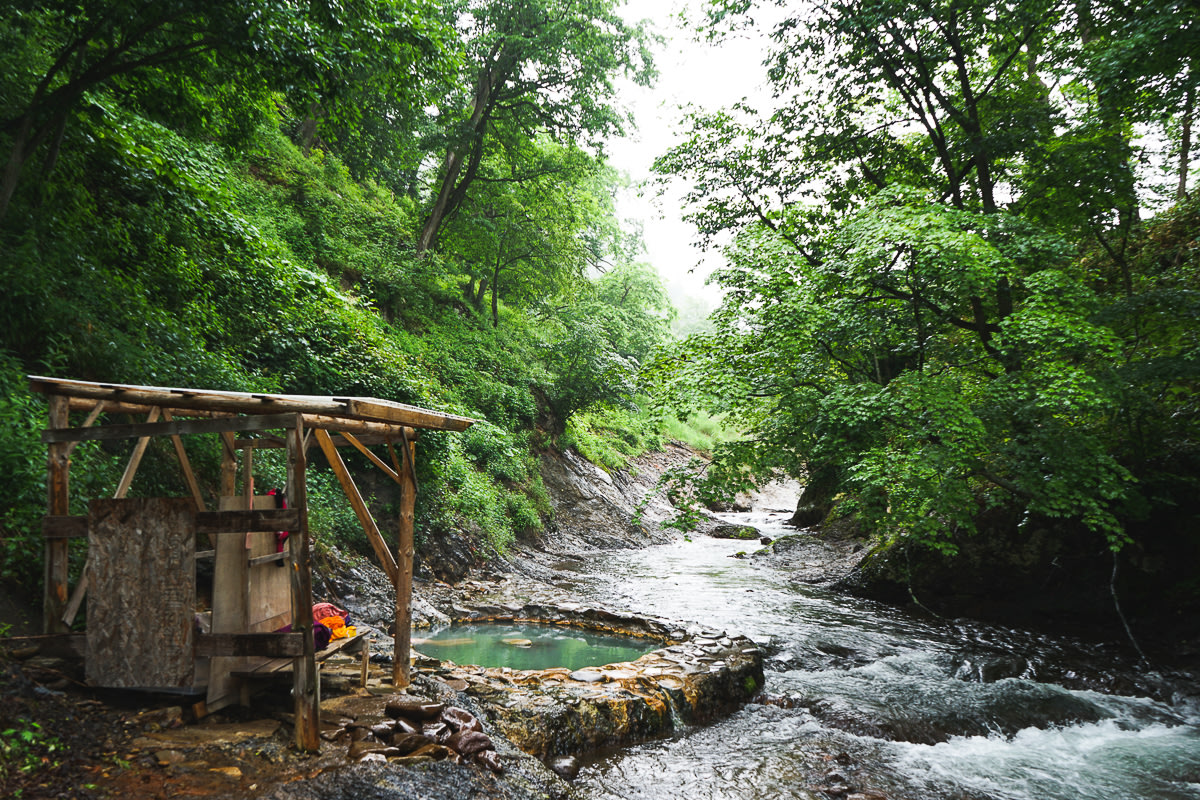
I like to call these “wild” onsen, and they are the ultimate onsen experience. Sometimes it might take a bit of a hike or a walk to get to them, but a dip in these hot springs is a wonderful reward for your hard work! As they do not have attached facilities, bathing is mixed-gender and bathing suits are usually not allowed. Taking a dip in them definitely requires courage, but the experience is well worth it and will be a stand-out of your trip.
If you do have the chance to try out wild onsen during your Hokkaido adventure, we highly recommend that you do. Nothing makes you feel more connected with this incredible land than bathing in a wild hot spring pool, surrounded by Hokkaido’s incredible nature.
Steps to the Onsen
Hopefully this blog post has helped prepare you for your first onsen experience. It’s natural to be a little nervous the first time you try them, especially with so many new things to think about. I will summarize my tips below so you can refer back to them once it’s time to hit the onsen.
Check in advance if you have tattoos.
Change into a yukata if you are staying at an onsen hotel.
Take a large body towel and smaller modesty towel with you.
Make sure you go to the correct changing room. Female changing rooms usually have red noren curtains hung over the entrance while male ones will have blue noren.
Take off all your clothes, taking comfort in the fact that everyone is in the same boat.
Take only your small towel into the bathing area. Leave your clothes, large towel and other possessions in the changing room, either in a basket or locker.
Sit on a stool and hold the shower in your hand as you wash yourself before going into the pools.
Relax in the various pools, taking care to keep the water clean and allow others to also relax.
Don’t forget to try the outdoor pools if the facility has them.
Dry your body with your small modesty towel before returning to the changing rooms.
Put your yukata or clothes back on and flip the basket upside down to check you haven’t forgotten anything.
Celebrate your successful onsen experience with a drink in the rest area.
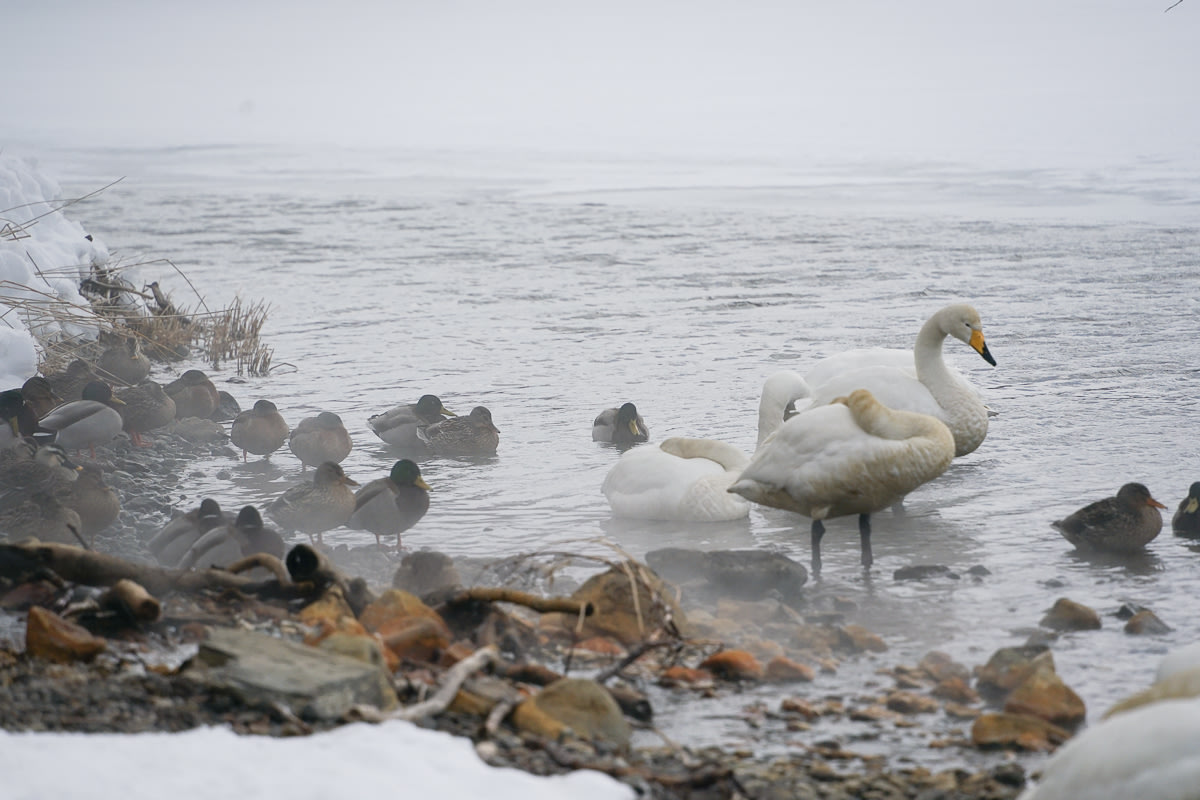
Hokkaido’s Onsen Await…
Onsen are just one of the many adventures that await you in Hokkaido. Armed with all the information in this guide, we hope that you will embrace the chance to try onsen during your stay here. And how many there are to try! With 244 onsen available, you will see how every hot spring differs thanks to Hokkaido’s incredible geology.
Now, close your eyes and imagine you are soaking in a warm Hokkaido onsen… Where are you in your mind? A soothing rotenburo? A fragrant hinokiburo? Maybe you’d prefer to enjoy the atmosphere of chatting locals in a big indoor bath or to be surrounded by the sounds of nature in a wild onsen? Someday soon, you will open your eyes and that daydream will be a reality!
As you can probably tell, I’m a big believer in the power of an onsen to recover after a day exploring Hokkaido’s outdoors. At Adventure Hokkaido we make a point to stay at onsen hotels as much as we can on our tours, you could consider all of our multi day tours “onsen tours”, so you can sample Hokkaido’s best onsen whilst soaking away your aches from a days adventure.
Stay at Hokkaido's best Hot Springs
On all of our tours, you'll have plenty of opportunities to experience and enjoy onsen.